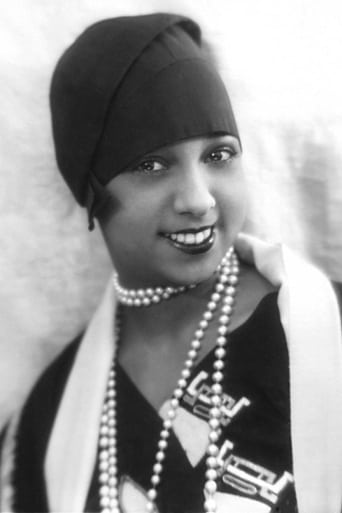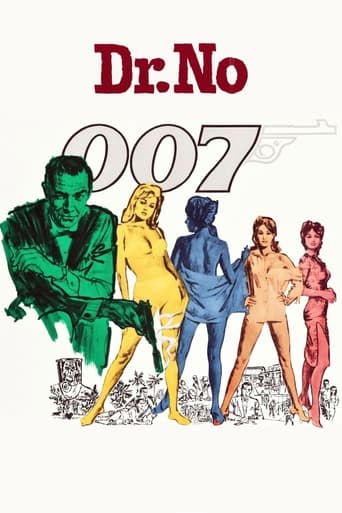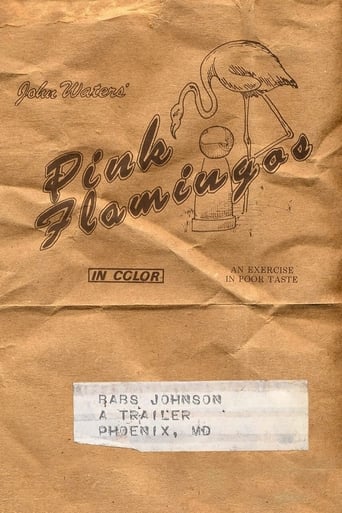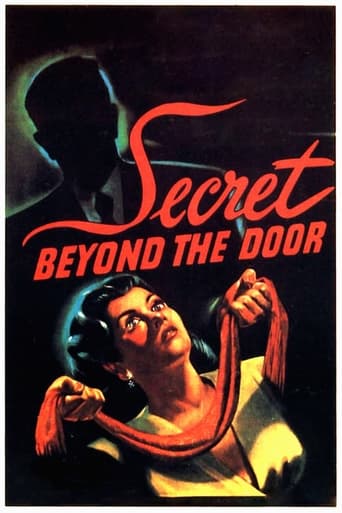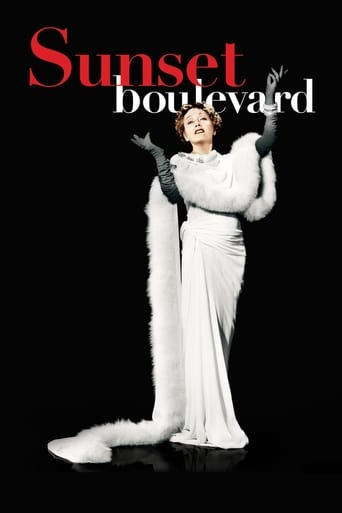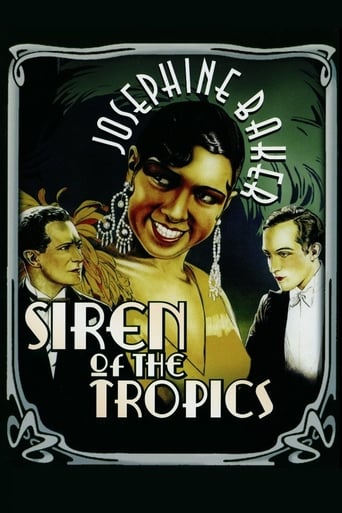

Siren of the Tropics (1927)
Marquis Sévéro, a rich, lazy Parisian, wants to divorce his wife so that he can marry his own goddaughter Denise. But Denise herself loves André Berval, an engineer employed by the marquis. Filled with jealousy, the marquis sends André to the Antilles, to prospect some land he has just acquired. He promises André that he can marry Denise if he is successful in the tropics, but he then writes to Alvarez, his manager at the site, asking him to prevent André from ever returning to France. The brutal Alvarez forms an instant hatred for André when the engineer breaks up Alvarez's attempt to rape Papitou, a beautiful native girl. Papitou becomes devoted to André, and protects him against Alvarez's schemes. But she faces a crisis herself when she learns that André plans to marry Denise.
Watch Trailer
Cast


Similar titles
Reviews
Though I had read John Baxter's Luis Bunuel biography some years back, I only recalled while leafing through it again the other day that the Spanish Surrealist had served as Assistant Director on this exotic romance intended as a showcase for legendary black performing artist Josephine Baker – hence, its belated viewing in this segment in my ongoing Bunuel retrospective dedicated to his formative years. Anyway, having acquired this and already owning another of the star's vehicles i.e. ZOUZOU (1934), I decided to also add to my collection the third film of hers – and the most famous – PRINCESS TAM TAM (1935) which was released first separately and then re-packaged in a Baker-related Box Set by Kino.Though I was not particularly enthused by the prospect of watching the title under review, being essentially a melodrama with interpolated dance routines, it turned out to be harmless enough – more importantly, it was delightfully typical of its period (including a couple of sequences which feature the shapely star in the nude!). As I said, the film's settings – high-society Paris, the tropics and even the ship-board section – were much in vogue in cinema of this era; hence, for someone who loves Silents as much as I do, they certainly evoked a pleasant air of nostalgia. Even so, these do not really jell together and the picture basically feels like three shorts pasted together!; predictably, the island sequences (with the obligatory hissable villain looking quite a bit like the great Lon Chaney!) prove the most engaging – while those at sea, featuring rampant politically Incorrect comedy relief (with Baker repeatedly chased all over the liner by virtually the entire crew and passenger list simply for being a stowaway!), make up its least appealing component.Bunuel cannot have been much inspired by the film (save, perhaps, for its notion of unabashed lechery on the two heavies' part) but he did retain its leading man, Pierre Batcheff, for his own notorious debut UN CHIEN ANDALOU (1929); at one point, the latter is even made to break the fourth wall by suddenly interacting with the audience –something which Bunuel himself would have the lead character do a quarter of a century later at the very end of his DAUGHTER OF DECEIT (1951)! To get to Baker's presence, which is the reason the film got made in the first place, she manages to exude star quality despite being surprisingly relegated to a secondary Other Woman role (Batcheff's relationship with his true love is plagued by the misplaced affection of her Godfather, the hero's unscrupulous employer – a situation eventually resolved by Baker's own timely, albeit clandestine, intervention); while undeniably an accomplished dancer (highlighted first in a native jig during an island festivity and, later, a full-blown Charleston number on stage at the "Folies Bergere"), I liked her best when displaying great affection towards animals (her large pet dog and a cat she has rescued from a well, which the canine amazingly helps in drying up!).Finally, I could not help noticing the choppiness of certain scenes – the key moment of Batcheff's attempted murder on a bridge suffers the most in this regard – but this appears to be the result of footage lost to the ravages of time (in fact, it was long thought that all of three reels had survived from SIREN OF THE TROPICS!). Having said that, the print I watched was attractively tinted from time to time.
During the 20's, the Weimar nights were fabulous, full of exciting and decadent cabarets in which this German count spent many glorious soirées but it is fair to say that also in Paris, the Parisians knew how to have fun.Dame Josephine Baker, Amerikan from birth, French by adoption, was the indisputable queen, a legend of the Parisian nights during the 20's, an enormous singer and entertainer that did delight the French bourgeoisie during the past century.Dame Josephine Baker had a short film career, appearing from time to time in some films and, as it happens, in "La Revue Des Revues" recently reviewed by this German count. "La Sirène Des Tropiques, a film directed hand-in-hand by Herr Mario Nalpas and Herr Henri Étiévant, was her first full-length film as leading actress.The most important aspect of "La Sirène Des Tropiques" is that it is a film with Dame Baker and this is the perfect excuse to watch this film. For Dame Baker fans or for ignorant longhaired youngsters who still don't know her, that's the most attractive aspect of the work because, in artists terms, the film it is an absolute failure.The plot's topic about the tropics; engineer Berval ( Herr Pierre Batcheff ) is sent to Monte Puebla by his boss the Count Severo ( Herr Georges Melchior ) in order to study the possibilities of mineral extraction from the mines that belongs to his chief. But the wicked Count ( a classical reiteration ) inner intentions is that Berval never return to France. In this way he doesn't have any obstacle in order to get Denise's love ( Dame Regina Thomas ). Meanwhile in Monte Puebla, Berval will meet Papitou ( Josephine Baker ) who is a sparkling indigene that will fall in love with him. She doesn't hesitate to pursue Berval to Paris where finally she will find out that he loves Denise but on the other hand she will become a music-hall star. The film is full of intrigues and satires (but this is too formulaic and with simple characters ). The result is an unwise mixture of genres in one film ( adventure, drama, musical, ) with plenty of bad performances including Dame Baker. This in spite of the fact that she plays a kind of free spirited girl, but similar to a cartoon character, a "pecata minuta" in itself. Our heroine was more interested to dance the Charleston than properly act. This is demonstrated at the end of the film, which includes an excerpt of her talented dancing. That's enough for Dame Baker fans and dissipated German aristocrats.And now if you'll allow me, I must temporarily take my leave because this German count must unknot his knees before dancing Charleston.
If you watch Siren of the Tropics with the mindset of the 21st century, try not to pay too much attention to the melodramatic plot about a tycoon trying to keep his daughter from marrying someone he doesn't think worthy of her. This seems to be an excuse to send the daughter's suitor to a faraway jungle to search for jewelry in order to prove the daughter's worth. It is here that we meet Papitou, Josephine Baker's character, who falls for the suitor after saving his life. Papitou follows the suitor back to France and is spotted by some theatrical agents dancing with orphan children. They decide to form a show with her but she won't perform unless she is promised to see the suitor. They call the suitor's potential father-in-law to arrange a meeting. Since the potential father-in-law knows what would happen if his daughter sees Papitou embrace her husband-to-be, he agrees. If you've seen some dramas involving mixed races made before the 1970s, you may be surprised by what happens here. The main reason to see this is to marvel at Ms. Baker's Charleston dance at the end. If you're interested in seeing early African-American film performances, especially Josephine Baker's, this one is definitely worth seeking out!
I only saw the first and last two reels, supposedly all of the file that has survived. Josephine Baker's role is similar to her roles in Zouzou (1934) and Princess Tam-Tam (1935), the innocent from the tropics who is brought to civilization and finds it somewhat wanting. However, she does get to keep a man in the end.Most interesting for Josephine Baker. It includes a short segment of one of her stage dances. Seeing her move in close-up is also a pleasure. The film is an oddity in that it was shot as a pantomime (there are no titles).


